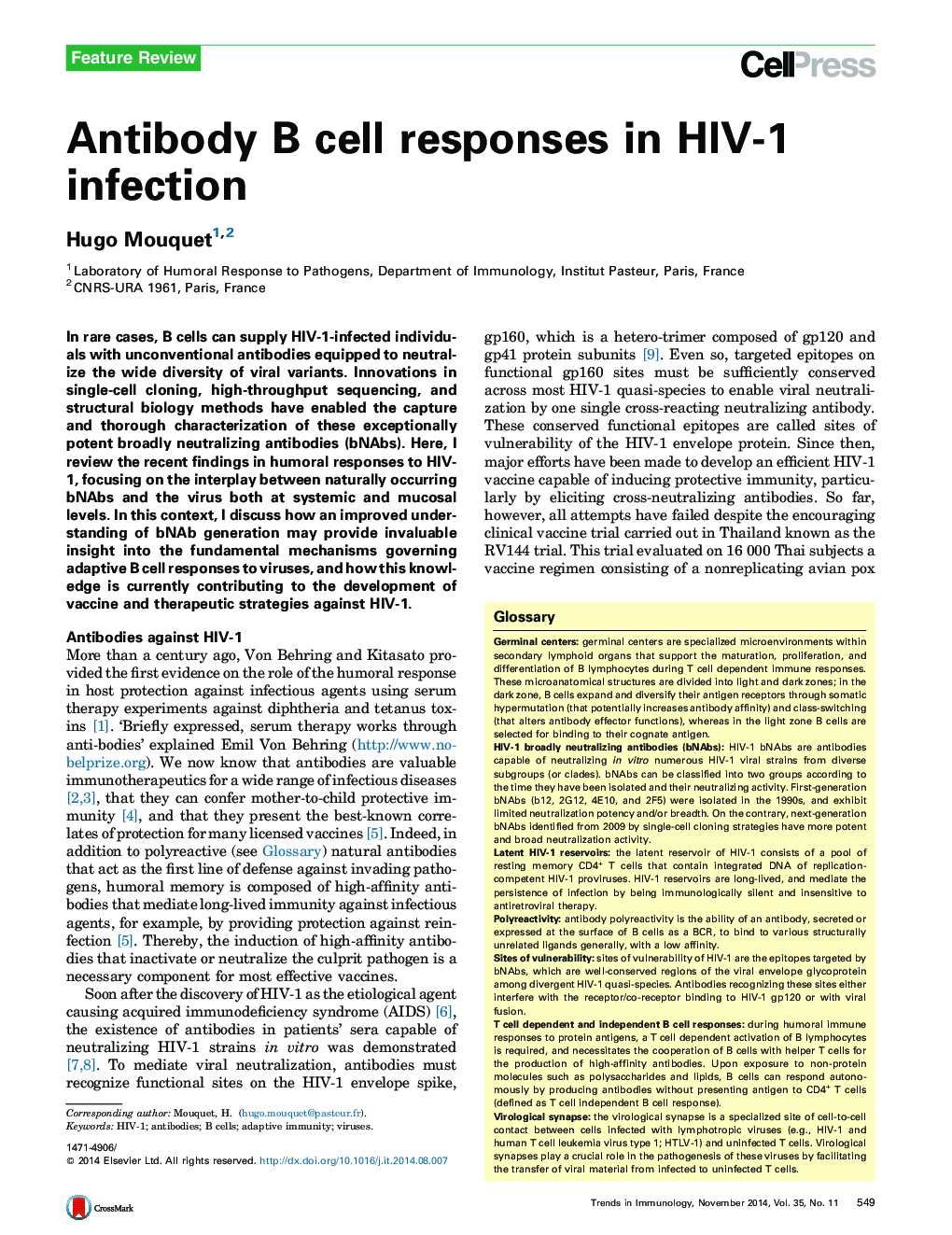| Article ID | Journal | Published Year | Pages | File Type |
|---|---|---|---|---|
| 4359812 | Trends in Immunology | 2014 | 13 Pages |
•bNAbs possess unique molecular features and thus, rarely develop in HIV+ patients.•bNAbs have different antiviral properties, and can bypass viral defense mechanisms.•bNAbs are generated through a co-evolution process with diversifying HIV-1 viruses.•bNAbs offer promising therapeutic opportunities to treat HIV-1 infection in humans.•Studying bNAbs biology is essential in trying to design HIV-1 vaccine strategies.
In rare cases, B cells can supply HIV-1-infected individuals with unconventional antibodies equipped to neutralize the wide diversity of viral variants. Innovations in single-cell cloning, high-throughput sequencing, and structural biology methods have enabled the capture and thorough characterization of these exceptionally potent broadly neutralizing antibodies (bNAbs). Here, I review the recent findings in humoral responses to HIV-1, focusing on the interplay between naturally occurring bNAbs and the virus both at systemic and mucosal levels. In this context, I discuss how an improved understanding of bNAb generation may provide invaluable insight into the fundamental mechanisms governing adaptive B cell responses to viruses, and how this knowledge is currently contributing to the development of vaccine and therapeutic strategies against HIV-1.
